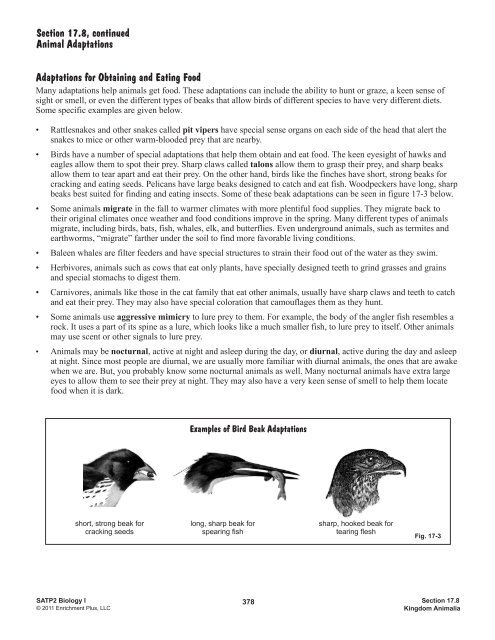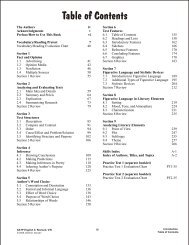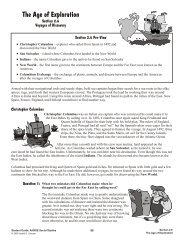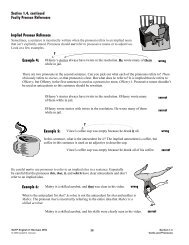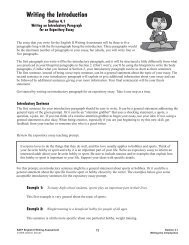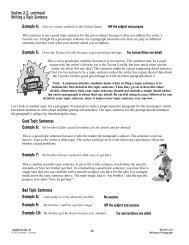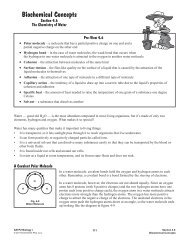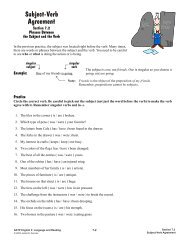Kingdom Plantae - Enrichment Plus
Kingdom Plantae - Enrichment Plus
Kingdom Plantae - Enrichment Plus
You also want an ePaper? Increase the reach of your titles
YUMPU automatically turns print PDFs into web optimized ePapers that Google loves.
Section 17.8, continuedAnimal AdaptationsAdaptations for Obtaining and Eating FoodMany adaptations help animals get food. These adaptations can include the ability to hunt or graze, a keen sense ofsight or smell, or even the different types of beaks that allow birds of different species to have very different diets.Some specific examples are given below.• Rattlesnakes and other snakes called pit vipers have special sense organs on each side of the head that alert thesnakes to mice or other warm-blooded prey that are nearby.• Birds have a number of special adaptations that help them obtain and eat food. The keen eyesight of hawks andeagles allow them to spot their prey. Sharp claws called talons allow them to grasp their prey, and sharp beaksallow them to tear apart and eat their prey. On the other hand, birds like the finches have short, strong beaks forcracking and eating seeds. Pelicans have large beaks designed to catch and eat fish. Woodpeckers have long, sharpbeaks best suited for finding and eating insects. Some of these beak adaptations can be seen in figure 17-3 below.• Some animals migrate in the fall to warmer climates with more plentiful food supplies. They migrate back totheir original climates once weather and food conditions improve in the spring. Many different types of animalsmigrate, including birds, bats, fish, whales, elk, and butterflies. Even underground animals, such as termites andearthworms, “migrate” farther under the soil to find more favorable living conditions.• Baleen whales are filter feeders and have special structures to strain their food out of the water as they swim.• Herbivores, animals such as cows that eat only plants, have specially designed teeth to grind grasses and grainsand special stomachs to digest them.• Carnivores, animals like those in the cat family that eat other animals, usually have sharp claws and teeth to catchand eat their prey. They may also have special coloration that camouflages them as they hunt.• Some animals use aggressive mimicry to lure prey to them. For example, the body of the angler fish resembles arock. It uses a part of its spine as a lure, which looks like a much smaller fish, to lure prey to itself. Other animalsmay use scent or other signals to lure prey.• Animals may be nocturnal, active at night and asleep during the day, or diurnal, active during the day and asleepat night. Since most people are diurnal, we are usually more familiar with diurnal animals, the ones that are awakewhen we are. But, you probably know some nocturnal animals as well. Many nocturnal animals have extra largeeyes to allow them to see their prey at night. They may also have a very keen sense of smell to help them locatefood when it is dark.Examples of Bird Beak Adaptationsshort, strong beak forcracking seedslong, sharp beak forspearing fishsharp, hooked beak fortearing fleshFig. 17-3SATP2 Biology I© 2011 <strong>Enrichment</strong> <strong>Plus</strong>, LLC378Section 17.8<strong>Kingdom</strong> Animalia


